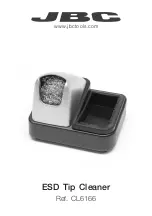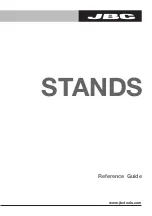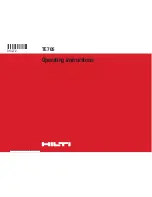
CARE OF WELLER CT SERIES TIPS
1.
Keep tip tinned; wipe only before using.
2.
Use rosin or activated rosin fluxes if possible. Acid type fluxes will qreatly reduce tip life.
3.
Remove tip and clean w/suitable cleaner for flux used. The frequency of cleaning will depend on the type of
work and usage. Tips in constant use should be cleaned at least once a week.
4.
Don't try to clean tip with abrasive materials and never file tip,
to
do so will greatly reduce tip life.
5.
Don't remove excess solder from heated tip before storing. The excess solder will prevent oxidation of the
wettable surface when tip is reheated.
6.
Don't use anti-seize compounds on tips, they have been plated for oxidation protection.
ABOUT WELLER
.
SOLDERING PENCIL TIPS
All Weller
CT
Series soldering pencil tips have been plated with an exclusive process that deposits three
(3) protective coatinqs. The hiqh conductivity copper lips are iron plated, then nickel plated and finally chromium
plated on non-working surfaces. The working surface is then pre-tinned. The chromium and nickel plating of the
tip prevents oxidation of the iron platinq which can cause freezing of the tip in the pencil. The chromium also
prevents solder "creep-up". Weller's "temperature-sensing" tips have a small ferromaqnetic sensing element
attached to the tip shank. The sensing element is coded with a number to indicate idle temperature in hun
dreds of degrees F. Thus a simple change of tips is all that is necessary to adapt the tool to an entirely differ
ent temperature range.
Use only original Weller soldering tips, parts and accessories for this product
TROUBLESHOOTING GUIDE*
CAUTION:
Disconnect from power source before attempting any repair.
I. Tool does not heat.
Check for 120 volts at receptacle. (240 volts for "D" versions)
II.
Check tool for:
1.
Magnastat (fastened to back of tip). Pencil will not heat or may overheat if it is missing. There should
be 1116" mrnimuin tip spring action.
·
2.
Correct heater resistance. With tip in tool, measure between blade contacts of cord plug. For a W60P,
214-248
ohms is normal and a W100P, 129-149 ohms is correct. Replace heater if readings are high or
low. A very high reading indicates an open heater, switch or cord.
3. To replace the heater or isolate the fault, proceed as follows. Remove two screws from element
flange. Grasp handle and black heat insulator in one hand and pull heater unit with other hand to un
plug it from the handle assembly. Measure heater resistance across the two closely spaced pins.
4.
Magnasiat Switch Check:
Place tool on workbench with flat at rear of handle up. Insert 3/16" flat blade screwdriver into slot at
rear of handle. Compress cord by pushing downward and toward handle until cord is pushed into
handle (do not pry on handle). This releases the strain relief catch. Slide handle down cord to expose
switch terminals. Check for proper magnastat switch operation by testing for continuity across mag
nastat switch terminals with tip held against end of switch and loss of continuity when tip is removed.
If magnastat switch checks good, check wiring for continuity. Refer to schematic.
Ill. Tool overheats or temperature is higher than marked on tip or the temperature control is erratic.
1.
Be sure tip is a Weller tip. Replace with Weller tip.
2.
Check heater for correct resistance and good connections.
3.
Check switch operation - replace switch if no other defects are found.
IV.
High voltage on tip or indication of damage to components.
�
1.
Check tip ground for maximum 1 ohm resistance from heater barrel to line cord round terminal. If
greater than one ohm, locate and correct defect.
2. With switch closed, measure resistance at cord plug between blade contacts and round pin - mini
mum 10 megohms. If reading is less, locate defective component and replace.
CAUTION:
When replacing heater assembly, be sure that the flange is marked 120V-60W or 120V-100W. On "D"
versions the flange needs to be marked 240V-60W or 240V-100W. Insertion of a lower voltage element
will cause the element to be destroyed and possibly damage the switch.
*For use with plug-in heating element tool only.
3






















